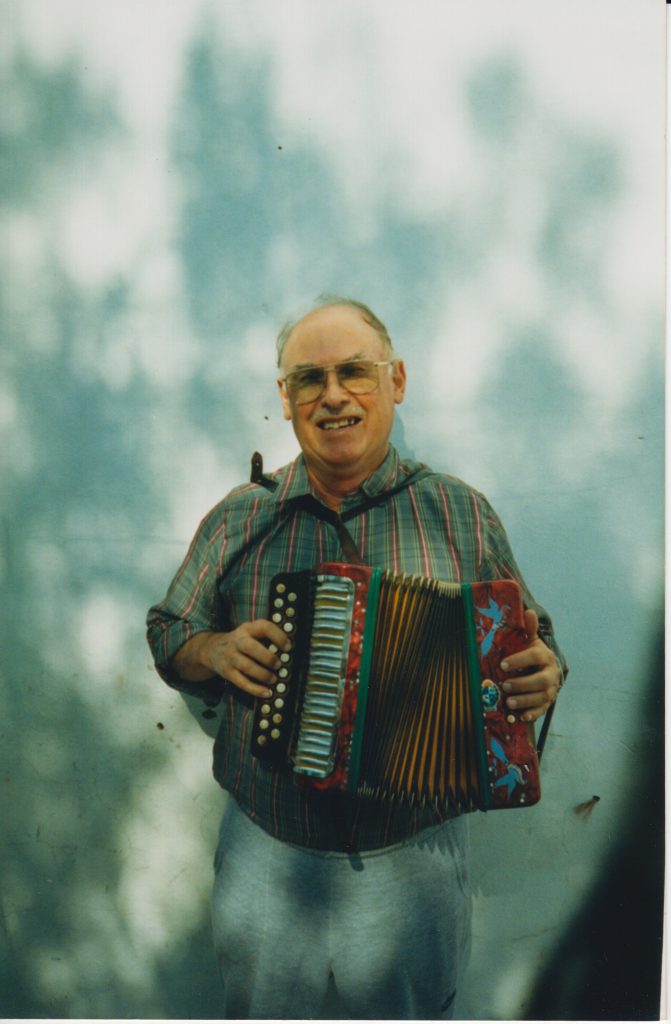Artista Carlos Portela

Portela (1936) nació en Sarandí, Puntas de Arroyo Negro, departamento de Paysandú. Trabajó en almacén, trabajos rurales, forestación, y se jubiló de bancario de la Caja Forestal. De los bailes de su juventud recuerda: «En esa época mandaba la acordeona de dos hileras […]. La [marca] tradicional era la Hohner […] del pájaro azul, ahora es muy difícil de conseguir, pero era lo que existía antes y era bueno».[1]
Contrastando los bailes de su juventud con el contexto actual, Portela observa: «ahora ha cambiado mucho, la música existe, pero lo que han cambiado, un poco, son las personas […]. Hay mucho más adelanto, pero ya la gente no se divierte como antes. Antes se juntaban cinco o seis, agarraban a la acordeona, iban a la casa de algún vecino, iban las mujeres, se juntaban, se hacía un baile y bailaba toda la noche tranquilamente […]. Era otra cosa. […] La música une a las personas».[2]
Esta polca, llamada La Cenicienta, fue aprendida por Portela en la región.
[1] Comunicación personal, 2002.
[2] Comunicación personal, 2002.
Portela (1936) was born in Sarandí, Puntas de Arroyo Negro, in the department of Paysandú. He worked in his family´s general store, as well as in rural work and forestry and retired as a bank employee of the Caja Forestal. In the dances when he was young, he remembers that «back then the two-row accordion was king […]. The traditional (brand) was Hohner […] with the «pájaro azul» (blue bird), now they are hard to find, but that´s what it was back then and they were good ».[1]
In comparing the dances of his youth with those of today, Portela observes, «nowadays a lot of things have changed, the music is still there but what has changed, a bit, are the people […] there is more technological advancement but people don´t have fun like they did before. Back then five or six people grabbed the accordion, went to some neighbor´s house, the women would go, they got together and held a dance and they danced all night […] it was something else […] Music brings people together».[2]
This minor-key polca, titled «La Cenicienta» (Cinderella Polka), was learned by Portela in the region.
[1] Personal communication, 2002.
[2] Personal communication, 2002.
Colecciones (2)
Colección 4. Transmisión oral en dos hileras / Oral transmission on the button accordion
Esta sección muestra un ejemplo claro del proceso tradicional de transmisión oral de melodías en el entorno social de acordeonistas…


